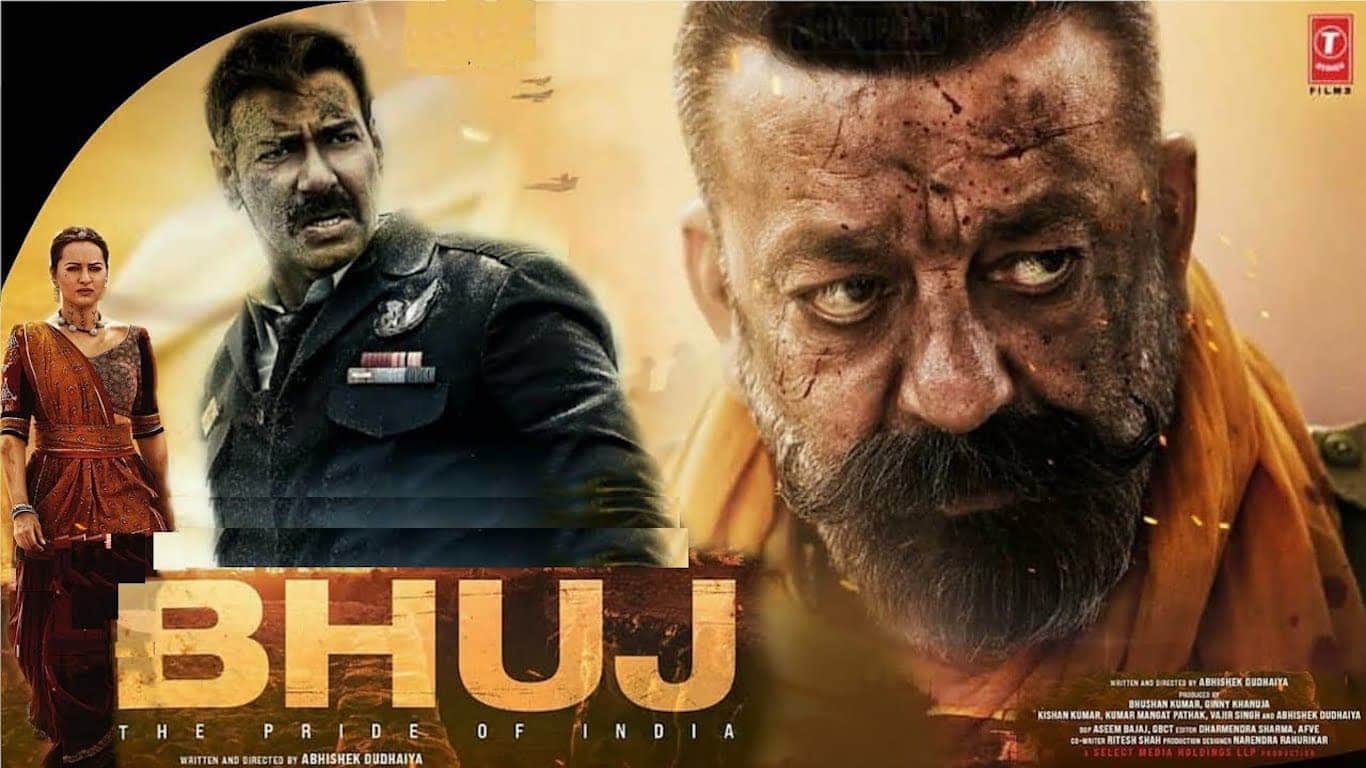They realize that the film will be a Bollywood star vehicle and a genuine accolade for the boldness of the Indian military when it spotlights two of the cast's top names. Sanjay Dutt plays an Indian resident who attacks Pakistan at the will and engages in a great deal of activity, while Ajay Devgn is the fundamental person in the job of Squadron pioneer Vijay Srinivas Karnik. Bhuj treats the 300 ladies of the town of Madhapur as a sideshow, zeroing in on an equal mission to stop the Pakistani armed force's development.
The film depends on the existence of Indian Air Force group commandant Vijay Karnik who was instrumental in the recreation of IAF Airfield in Bhuj in Gujarat. The film follows the previous IAF Squadron head at BhuJ air terminal answerable for Vijayarnik (depicted by Ajay Devgn) who reproduces the whole IAAF air base with the assistance of 300 ladies from the neighborhood town of Madhapar to ensure the air base. The film depends freely on the commandant of IAF group Vijay Carnik and is a genuine story of boldness, nationalism and assurance, set against the background of India-Pakistan battle in 1971.
The film likewise includes Sanjay Dutt, Sonakshi Sinha, Ammy Virk, Nora Fatehi and Sharad Kelkar. One more part of the film is the Indian Air Force Squadron authority Vijay Karnik and how the occasions at Bhuj Airport during Indo-Pakistan War in 1971 were sensationalized for imaginative purposes, contrasting the occasions of 1971 with the assault on Pearl Harbor.
During the Indo-Pak War in 1971, the IAF runway at Bhuj was obliterated in battle. During this time, 300 town occupants, for the most part ladies from Madhapur and BhuJ, chose to bring the IAAF down and fix the runway inside 72 hours. IAF unit pioneer Vijay Karnik drove in excess of 300 nearby ladies worked for quite a while to revamp the runway.
The film reviews the emergency and the commitment of 300 Bhuj ladies to the Indian military. With the players "desolate look and miles of distance between the different Airbases and flying heads, and the high velocity at which Pakistani warrior jets bombarded Indian Air Bases," one can comprehend in painful detail that the Bhuj Air Base was the Pakistani armed force's objective to oversee the West Indies during the 1971 conflict. To investigate the "Bhuj disaster" of the 1971 India-Pakistan war, first the presence of West Pakistan and East Pakistan is clarified, and afterward the brief period in which East Pakistan's guide transformed into Bangladesh.
During the Indo-Pak War of 1971, which went on for 13 days, the Pakistan Air Force (PAF) routinely assaulted Bhuj Airfield. The Bhuj Air Base was perhaps the most unmistakable Indian Air Force territory that was seriously hit. The evening of December 8 PAF and Pakistan Air Force airplane dropped in excess of 14 napalm bombs at the Indian Air Force Bhuj Airfield.
For three days, in excess of 300 ladies from neighboring Madhapur people group of Bhuj worked with Squadron Leader Vijay Karnik and DSC troops of the IAF to modify and to make the landing strip functional. Over the most recent three days of Squadron Commander Karnik, he and his men, along with in excess of 300 ladies from Madhapurs and Bhuj, remade the air terminal, a significant key office for the Indian Air Force (IAF) and the nation in general.
This fictionalized portrayal of an episode in the 1971 Indo-Pakistani conflict spins around brave troopers and regular people who in one night reconstructed a bombarded out airstrip. The story stars Ajay Devgn, Sanjay Dutt, and Sonakshi Sinha and catches the endeavors of many ladies who supported their nation when it required them the most. Empowered by 300 Bhuj ladies to assist with fixing bombs, the Indian Air Force runway in BhuJ was at battle with group pioneers Vijay Karnik and Devgn.
Bhuj, who follows the genuine occasions of 1971, is unfilled and limps along, which is more suggestive of a dropped portable game than a film. We hang tight many months for a decent conflict show, and before you know it, two epic films fall simultaneously, and nobody grumbles.
In the disclaimer, Bhuj's producers clarify that the film is an anecdotal work propelled by obvious occasions. The movie's chief, Abhishek Dudhaiya, messes around with current realities to improve an emotional and motivating story. History is never an issue in Bhuj on the grounds that it is important for the masala of recorded dramatization, yet the genuine issue lies in the manner by which the creators, like Raman Kumar of Dudhaiya, Ritesh Shah and Pooja Bhavoria, choose to execute the thought.
The Pride of India is a film delivered on OTT stages like Disney + and Hotstar. All things considered, you can't loathe a film like Bhuj without despising a film like this.
Dudhaiya grew up paying attention to her grandma recount the tale of the Bhuj runway and needed to disclose a film about it to bring issues to light of the 1971 conflict. Over an hour after the film, the center movements to the town, where the ladies are better than the men as they are away from home looking for work in the city. Peruse BhuJ's synopsis and hope for something else than 300 ladies from the town of Madhapur to secure the story.
Group Leader Vijay Karnik, who is accountable for the Bhuj Air Base, is gathering 300 neighborhood ladies from across the Gujarat Bhuj locale to reconstruct a runway in the district inside 72 hours.



0 Comments